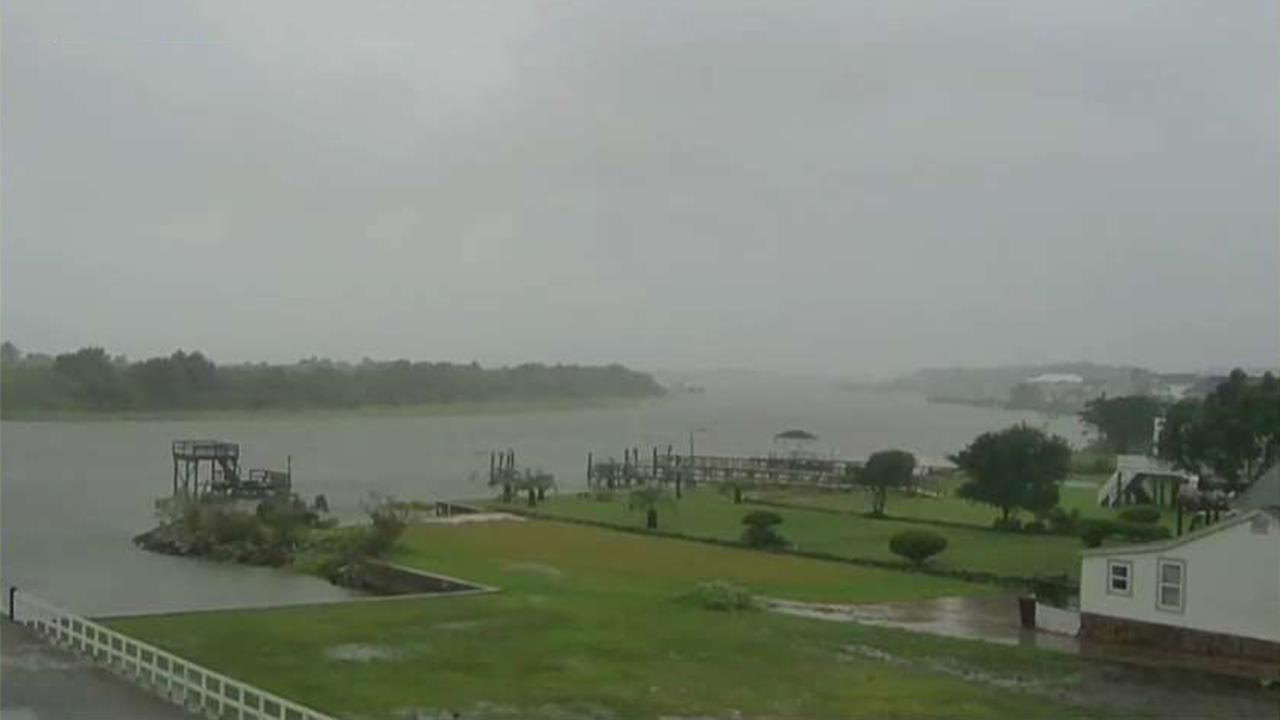Hurricane Michael's storm surge swamps Apalachicola
Powerful Category 4 hurricane pushes Gulf of Mexico waters ashore; Phil Keating reports.
Between early June and late November, coastal locations from Texas to Maine are vulnerable to the wrath of tropical storms and hurricanes that can cause vast destruction.
On average, 12 tropical storms – six of which become hurricanes – form over the Atlantic Ocean, Caribbean Sea or the Gulf of Mexico during the hurricane season, according to the National Weather Service.
In a typical two-year period, the U.S. coastline is struck by an average of three hurricanes, one of which is classified as a major hurricane with winds of 111 mph or greater. The storms can have winds ranging from 74 to over 157 mph that brings destruction from storm surge and torrential rains that have the ability to cause massive flooding.
HURRICANE WARNING VS. HURRICANE WATCH: HERE'S THE DIFFERENCE
When such storms approach land, the National Hurricane Center will warn of the dangers of what is known as "storm surge."
A storm surge warning means “there is a possibility of life-threatening inundation, from rising water moving inland from the coastline, in the indicated locations,” according to the National Hurricane Center (NHC).

A storm surge is “the abnormal rise in seawater level during a storm,” the National Ocean Service says. (National Ocean Service)
“Storm surges, in general, used to be a leading cause of fatality with hurricanes, but now – because of evacuations and getting the word out so far in advance – [the number of deaths] has gone down,” Joel Cline, a tropical program coordinator with the National Weather Service, previously told Fox News. “But [storm surges] still remain to be the potential largest loss of life from a hurricane.”
What are storm surges?
A storm surge is “the abnormal rise in seawater level during a storm,” according to the National Ocean Service. It’s measured by how high the water reaches from the normal astronomical tide.
Surges are caused by winds from a storm pushing water toward the shore, according to the National Ocean Service. They can cause catastrophic damage and flooding, toppling houses and destroying roads.
"The combination of a dangerous storm surge and the tide will cause normally dry areas near the coast to be flooded by rising waters moving inland from the shoreline," the NHC said.
WHAT WAS THE WORST HURRICANE TO HIT THE US? HERE ARE THE COSTLIEST STORMS
Storm surges are different from storm tides, which refers to the rise in water levels due to the astronomical tide combined with storm surges.
What are some tips to prepare?
The best way to prepare for storm surges is to evacuate, Cline said.
“You really can’t run away from the winds of a hurricane, but you can avoid the water,” Cline said.
He warned those in the storm’s path that “alleviation [from storm surges] to property is likely not going to happen in these instances.” To prepare, he said, people should put essential documents in waterproof bags as they plan to evacuate to a safer area.
CLICK HERE FOR MORE WEATHER COVERAGE FROM FOX NEWS
He also stressed the importance of following hurricane preparation advice, including having fresh water, batteries, battery-powered radios, propane, flashlights, canned food and handheld can openers on hand.























